Lower your internet bill
61% of people overpay for their internet.
Are you one of them?
Unlock exclusive offers in your area!
Call now
[tel]Enter zip code
1 Star is Poor & 5 Stars is Excellent.
* Required

Written by Rosslyn Elliott - Pub. Jan 12, 2022 / Updated Mar 19, 2024
Table of Contents
Are you happy with your Internet service?

About the author
The world of social media is everywhere, blending seamlessly with our everyday life. Billions of Internet users engage with social media platforms every day.
Social media has taken over how people and businesses network. That much is a given. But we are also constantly showered with content from businesses trying to influence us.
Users worldwide encounter ads daily all over the internet, including on social media. Consumer behavior often depends on these digital marketing efforts.
Social marketing strategies are an important part of digital marketing. Most of your favorite social media platforms target an audience, and a great deal of user-generated content tends to follow digital marketing strategies. Why? Because it works. Businesses and individuals alike are trying to get “likes" and followers. That’s the whole allure of social media. Gradually, people and businesses learn which posts get the most engagement, and others imitate that success.
The year 2023 brings important changes to social media statistics. But as you look over the numbers, keep in mind that the social media landscape changes all the time. Stats can provide part of the picture. But it’s just as important to understand how the social media market behaves and where social media trends are leading.
Different platforms tend to work better for exposure in certain industries. For example, let’s say you have a startup clothing company, and you want to make a splash in the fashion sector. Instagram is a hot platform for fashion. To succeed, you will have to leverage Instagram reels to market your work.
Non-commercial social media users can also benefit from knowing how social media works. You’ll be smarter about the content you see if you understand what’s coming across your feed and why.
Social media is here to stay. Planning your interactions online will help you reap the many benefits of social networks. And insight from social media data points can help you make better decisions about your online activities.
Here’s an example of how we can make projections and crunch numbers, but basic trends are what matter most.
The table below was generated in October 2020 as way to predict future social media users. How accurate is it? Well, it’s now 2023. The table predicted that we would have 3.55 billion social media users, meaning that 81.9% of the total number of users on the internet would be using social media.
What they got wrong: today’s reality blew out those numbers by more than a billion users over what was predicted for 2023.
What they got right: social media user numbers rose. So, the trend was correct, even though the numbers were way too low.
Keep your eye on trends and principles of user behavior as you read the social media statistics in this report.
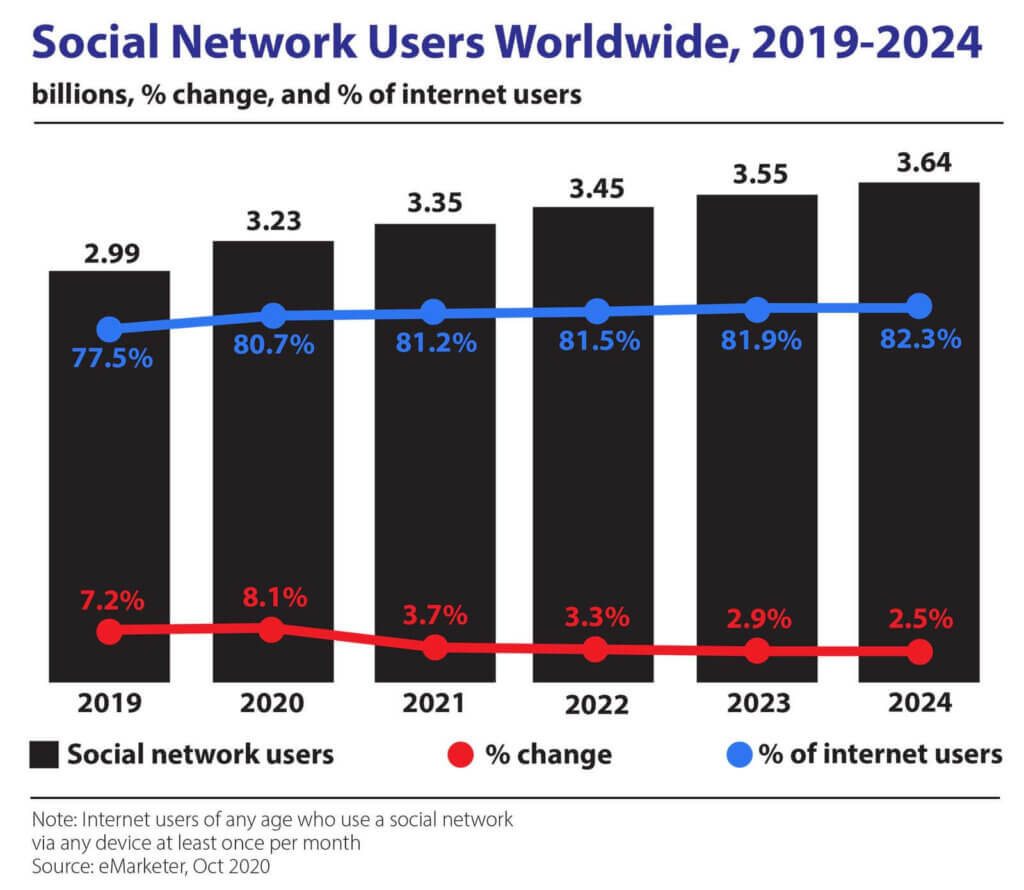
It’s truly mind-boggling when you consider how much of the world now networks through social media. Social media has been around for barely two decades, and yet it has completely changed the way we interact with each other.
In 2023, there are 4.74 billion active social media users across all social media platforms. That means 93% of all internet users also use social media.
Around the globe, 60 percent of the world’s population engages in social media networks. That’s right: almost two-thirds of the world’s population is on social media in one way or another.
The number of active users on popular social media platforms is very high and often highlighted in crucial social media statistics. So, what is causing the spike in the number of people engaging on these platforms?
The Pew Research Center determined that adults under 30 stand out for their use of social media. They tend to prefer sites like Instagram, Snapchat, and TikTok. Younger adults tend to influence and control these social media channels in a way that no other age group can. Having grown up with the technology, they are comfortable with communicating, creating and innovating in digital forms. The more digital natives grow up with social media, the more usage rises.
The rise of young digital natives is a big factor in the usage of social media. Another reason for the dramatic increase is the expansion of mobile possibilities with apps. Mobile devices make a social media platform more available and accessible.
Apps make it easier to engage and create content on the go. The optimization of apps for mobile phones created an increase in social media users. Mobile phones and their cameras make it easy for people to share their lives with others by posting online..
This is especially true for young adults. Adults between the ages of 18 to 29 make up about 84 percent of social media users in the United States.
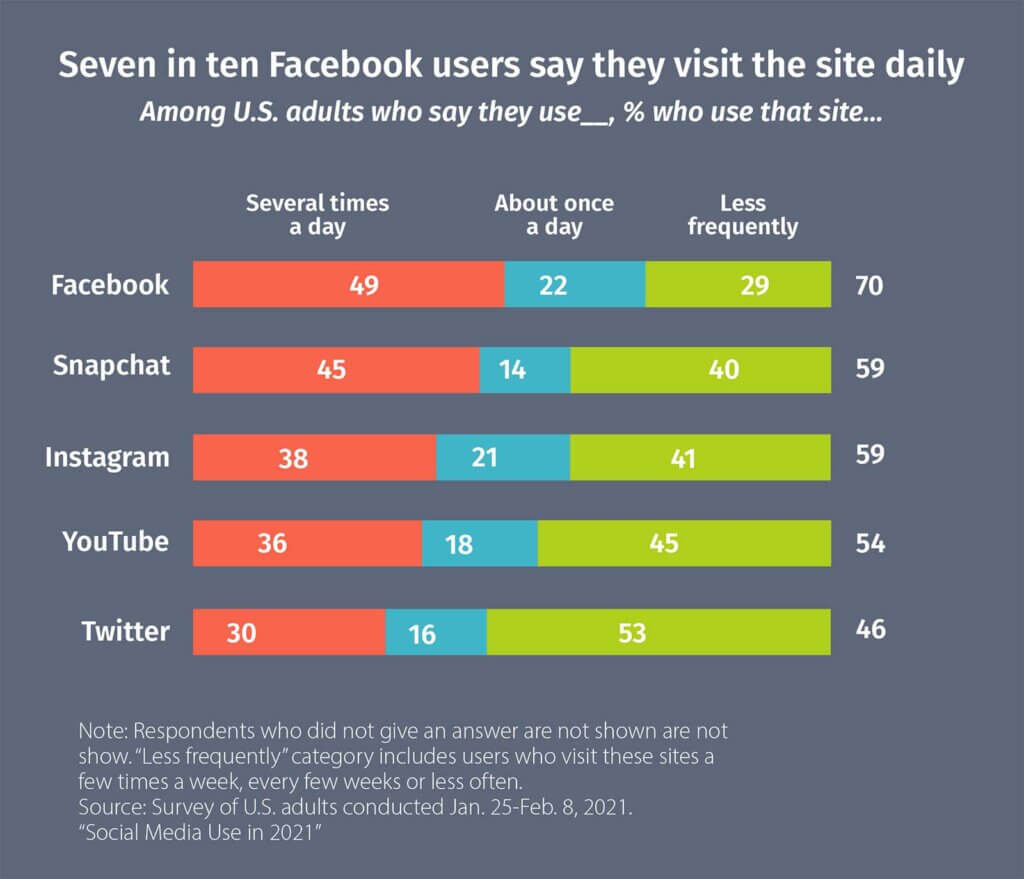
Social media statistics continue to put Facebook on top as the market leader of social media. 64 percent of all social media traffic comes from the popular social media platform, however, that is down from 72 percent in 2021. Facebook users number 2.95 billion per month worldwide.
To put this dominance in perspective, let’s take the image-sharing site Pinterest. Pinterest’s users rank second with a mere 12 percent of all social media platform visits. Microblogging site Twitter accounted for 11 percent of the market share in September 2022. But in the wake of Elon Musk’s notorious takeover, Twitter is projected to lose 32 million viewers over the next two years.
In the last few years, Facebook has also experienced some setbacks and reputational harm. Still, it’s important to recognize Facebook’s power as a social media giant. Facebook’s sheer number of users makes them one of the leaders in social media marketing.
Facebook users add up to 71 percent of the entire population of the United States.
Different social media platforms appeal more to certain target age groups.
The majority of social users are in the 18 to 29 group. TikTok users are much younger than other social media users, with 25 percent of TikTok users being 10 to 19-year-olds.
Meanwhile, 60 percent of LinkedIn users are between the ages of 25 to 34. Due to the professional nature of the site, LinkedIn users must be old enough to be in the workforce. Still, they tend to be younger adults because digital natives are often more comfortable with digital platforms.
Understanding the users of each platform is crucial to a marketing strategy. Making an informed decision about the best strategy often depends on the age of the audience. Your target audience will also vary depending on the product or service you’re promoting. Hip, urban-style sneakers will be more likely to sell to a younger audience than to the boomers who are now over 60. So they could be much more effectively promoted on Instagram than on Facebook.
Social platforms are the most appealing to the youngest generation of users: Generation Z. Gen Z includes young people between 8 and 24 years old.
Gen Z leads social media usage. Almost the entire generation uses social media daily. About 98 percent of Generation Z owns one or two mobile devices. And 97 percent of them use social networks to shop, socialize, and watch video content.
Here are more stats about Generation Z and their use of social media.
Millennials are also very active on social platforms. About 81 percent of 30 to 49-year-olds claimed to be active users of social media in a Pew Research study.
The preferred social platform for millennials is Facebook. But millennials like to split their screen time across different platforms. With more of them in the workforce than Gen Z, millennials tend to be more numerous on LinkedIn. Like Gen Z, though, millennials are active Instagram users and Twitter users.
Generation X is sandwiched between millennials and baby boomers. Gen Xers make up 30 percent of the American population. And they’re a target audience that a lot of marketers want. They have always been known for their independent-mindedness. Journalists have frequently noted that Gen X feels “invisible" compared to the much larger generations around them.
According to a Neilsen report, Generation X spends an average of six hours and 58 minutes per week on social media networks. Marketers have tended to overlook Gen X, which is a mistake as they now have considerable purchasing power.
Generation X has a large, if subtler presence on social media without the “influencers" that rose during the milennial generation. Almost 90 percent of Gen Xers are YouTube Users. Extra stats reveal interesting insights.
Although baby boomers are not huge on social media, they still have a preference for Facebook. About 78 percent of the older generation are Facebook users.
Social media marketing campaigns focus more on the younger generations. Yet the generation with the most stable finances is the baby boomers. And they’re the ones often left out on social media.
Baby boomers are set to pass $68 trillion to their children. This is the largest transfer ever, making them the wealthiest generation. They’re also more active on social media than you might think. On average, they spend 48 minutes per day browsing Facebook and Instagram.

These days, it’s not uncommon to spend hours at a time scrolling online. This includes time spent on social media apps and messaging apps like WhatsApp.
The latest statistics show that an average user spends roughly two and a half hours on social media per day. And that’s just in the United States.
Out of the world’s population, citizens of the Phillippines spend the most time online per day. They spend an average of three hours and 53 minutes on social media every day.
Given the prolonged daily exposure of many people to social media, there’s no shortage of opportunities for businesses to expand their markets.
If there’s one thing social media is good for is social media marketing. The best example of this is Instagram. Marketers love to try new digital marketing strategies through the popular website.
Most businesses crown Instagram as the most successful platform for influencer marketing. 98 percent of marketers prefer the photo-sharing app over others for this reason.
Social media marketing is the most efficient way to promote products and services. Almost 80 percent of marketers report buying paid advertising on social media. This allows them to broaden their target audience.
Before buying products, 54 percent of browsers research products on all platforms. They use social media advertising as a way to gain knowledge about products they like. This is the main reason companies use digital marketing to promote their products.
For example, businesses use Instagram stories to promote products through video marketing tools. These campaigns appeal to Generation Z and millennials the most. They make up 67 and 57 percent of Instagram users respectively.
A good social media strategy attracts users to social media platforms. And a good social media marketing strategy will appeal to those potential buyers.
The way users make purchases depends on the content they engage with. User reviews, ratings, and user-generated reels affect buyers at all stages of their decision process, also known as the marketing funnel.
In fact, marketing statistics show that 79 percent of potential buyers are influenced to make purchases by user-generated social media content. By contrast, only 13 percent of content created by brands has the same power. And only eight percent of influencer-created promotion has any effect on purchasing decisions.
User-generated social media content is clearly a key element of social media marketing, which is ironic as many brands overlook its power.
Social media marketing is now essential to build your brand. One way businesses maximize social media marketing strategies is by providing exceptional customer service in their social media engagement.
What is customer service on social media? Social media runs primarily through dialogue. People exchange thoughts, comments, experiences, and reviews. One of the great benefits of social media is that businesses can talk directly to their customers and build brand loyalty through that customer experience.
Reponses to all customer comments are important, but it’s vital to respond to a customer who has a negative comment. Social media statistics show that addressing a complaint with tact and consideration increases a brand’s popularity. The simple act of replying promptly to help an unhappy customer can help you grow by 25 percent.
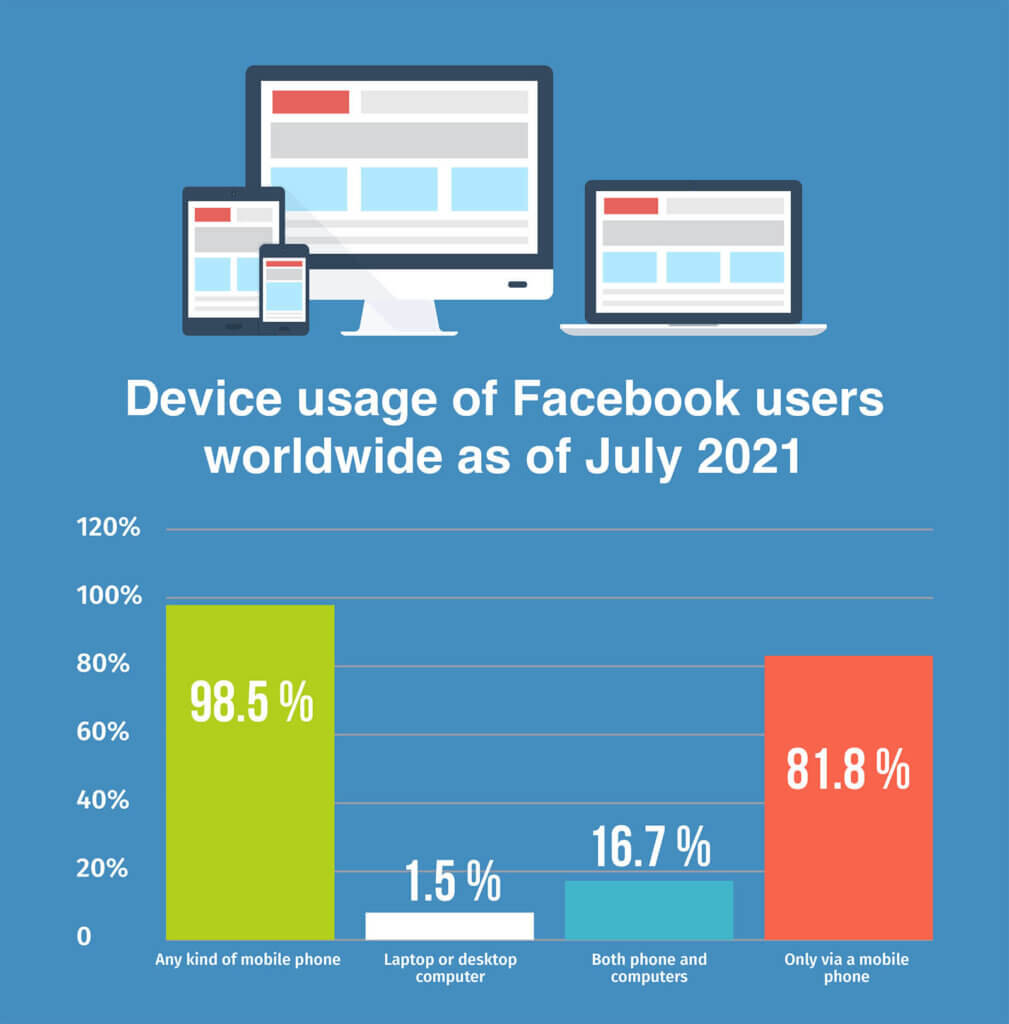
Instagram Stories launched in 2016, and have grown in popularity ever since. The Stories are separate from the Instagram main feed. They tend to be less polished and perfect, which is part of their charm. Instagram Stories are in-the-moment and authentic. They are designed to be no more than 15 seconds long each, though Instagram will play four of them in a row for a total of no more than one minute.
According to Instagram statistics, total Instagram users surpass the one billion mark. Of that number, Instagram has 500 million daily active Story users worldwide. Here are some additional stats.
Mobile devices are the most popular way for users to access social media. 98 percent of Facebook users access the platform through their phones.
Smartphones and social media go hand in hand. And because both technologies advance at an equal pace, marketers need to understand how social media campaigns translate on mobile devices.
Sites like YouTube and Instagram depend on the public they can reach through mobile devices. YouTube alone accounts for more than 25 percent of total worldwide mobile traffic.
People are taking their phones with them everywhere. Why not encourage them to take your business with them, too?
Mobile device user behavior is key to the success of your social media strategy. By leveraging statistics on mobile usage, you can better cater to your audience and appeal to every consumer.
Social media marketing statistics are constantly in flux. Whether you have access to recent statistics often depends on who has conducted relevant studies.
Sometimes, data from a year or two ago still tells you a lot about social media behaviors today. Other times, a major advance or breaking news (Elon Musk buys Twitter!) will change the entire market in a matter of months. There are new platforms every day. New content pops up every minute.
As you design your strategy, the most important principle is to stay flexible and be always learning. You will need to understand your target audience and meet them where they are, and that means embracing change.
By studying social media statistics and understanding their patterns, you can develop deeper insight into this parallel digital world. Then you’ll be prepared to be really innovative and relevant with your digital marketing strategies.
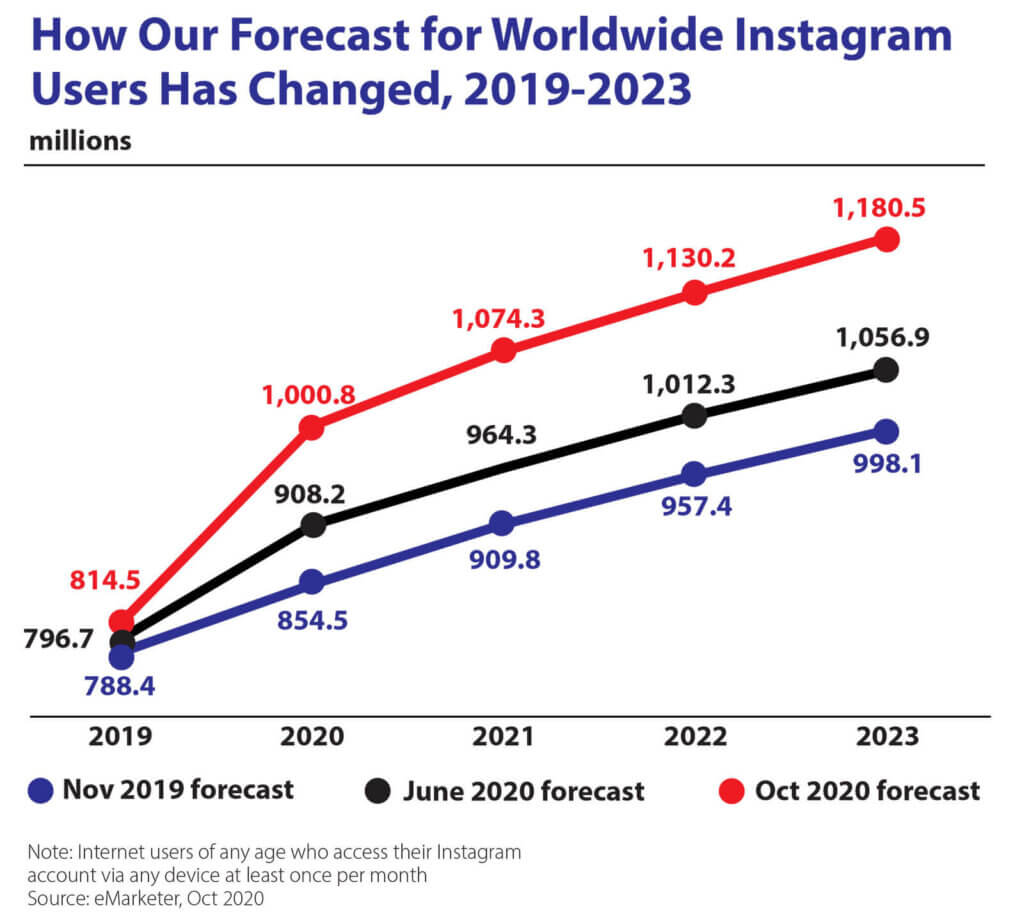
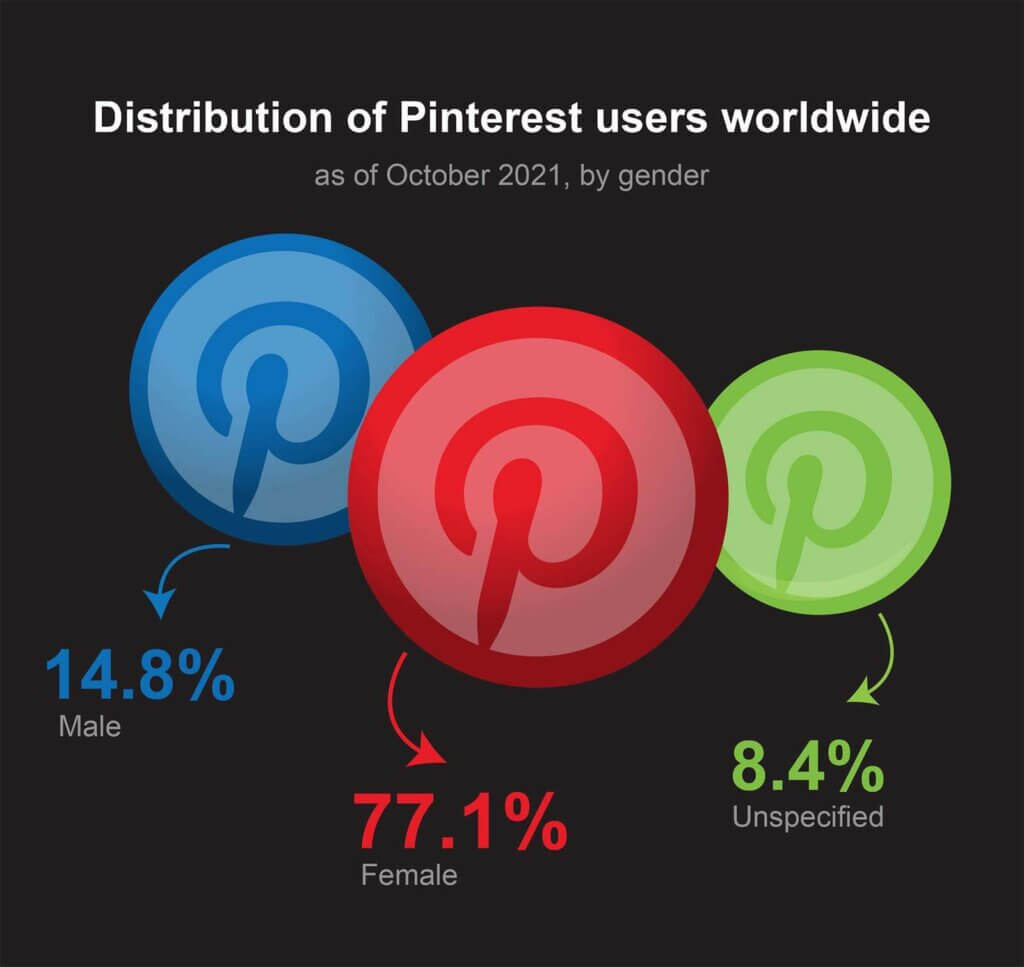
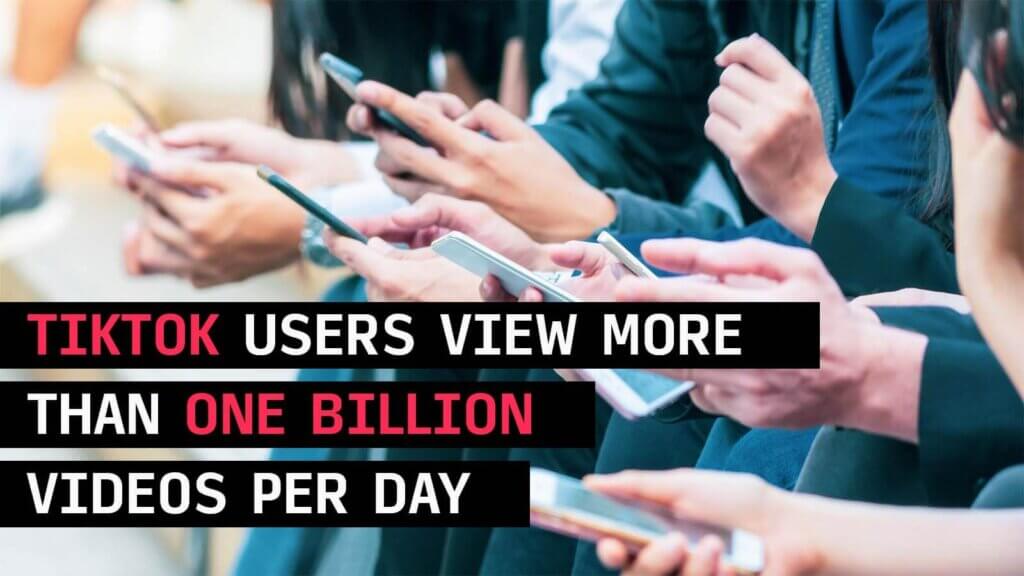

About the author
Congratulations, you qualify for deals on internet plans.
Speak with our specialists to access all local discounts and limited time offers in your area.
[tel]61% of people overpay for their internet.
Are you one of them?
Unlock exclusive offers in your area!
Call now
[tel]Enter zip code